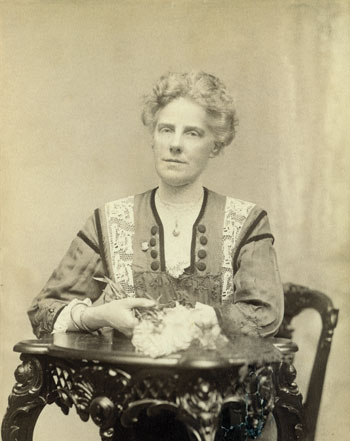Mother’s Day. For most of us, it’s a Sunday in May marked by greeting cards, flowers, long-distance phone calls, and maybe a brunch reservation you made weeks ago to avoid the rush. It’s a sweet, sentimental holiday—a time to pause and show appreciation for the women who raised us, loved us, and often kept the whole family running quietly behind the scenes.
But this day, we all know and love didn’t just appear out of nowhere. It’s not ancient like Christmas or rooted in a religious calendar like Easter. As we celebrate it in the United States, Mother’s Day has a very specific origin story. And that story is tangled up in heartache, determination, public health reform, the Civil War, and—believe it or not—a bit of corporate frustration. So, let’s take a few minutes together and trace it back to where it all began.

Grafton, West Virginia: Where a Daughter’s Grief Sparked a Movement
The year was 1908, and a woman named Anna Jarvis held a memorial service for her mother at St. Andrew’s Methodist Church in Grafton, West Virginia. If that name rings a bell, it’s because today, the same church is home to the International Mother’s Day Shrine—a place that recognizes the holiday’s humble beginnings.
But rewind a little further. Anna’s mother, Ann Reeves Jarvis, was no ordinary woman. During the Civil War, she tended to wounded soldiers from both the Union and Confederate sides. Her compassion didn’t stop at political or regional lines—she simply saw people in pain and helped them. After the war, she started something called Mother’s Day Work Clubs, which popped up in multiple towns and cities. These clubs weren’t social events; they were serious efforts to improve sanitation, reduce infant mortality, and promote public health—especially in Appalachian communities hit hard by poverty and disease.
So when Ann Reeves Jarvis passed away in 1905, Anna wanted to do more than just grieve quietly. She wanted to honor her mother’s legacy in a way that would inspire others to do the same. She believed that mothers deserved recognition—not just for giving birth, but for the work they did every single day to hold families, and even communities, together.

Congress Laughed. Anna Didn’t.
Anna Jarvis was determined to make Mother’s Day an official holiday. She had the passion, the story, and the momentum. But when she first pitched the idea to Congress in 1908, they rejected it. Their reasoning? If they allowed a Mother’s Day, then surely people would come asking for a Mother-in-Law’s Day next—and where would it stop?
It was a dismissive joke at the time, but Anna didn’t laugh. Instead of throwing in the towel, she shifted gears. If Congress wouldn’t move, maybe the states would. And they did. By 1911, just three years after the first Mother’s Day service in Grafton, every state in the U.S. had some form of Mother’s Day observance. West Virginia, fittingly, was the first.
It didn’t take long for Washington to catch up. In 1914, President Woodrow Wilson signed a proclamation declaring the second Sunday in May to be a national holiday honoring mothers. Just like that, Anna Jarvis’s vision was enshrined in American life. But as we’ll see, that was only part of the story.
A Dream Fulfilled—Then Hijacked
For a brief moment, Anna was overjoyed. She had done it—honored her mother and all mothers across the nation. But it didn’t take long before she started to notice something that didn’t sit right with her.
You’ve probably guessed what’s coming.
Greeting card companies, candy makers, and florists all saw an opportunity. By the early 1920s, Hallmark and others had already begun mass-producing Mother’s Day cards, turning what Anna saw as a personal, sacred observance into a major retail event.
To be clear, she wasn’t against showing affection—far from it. She just believed that true gratitude came in the form of handwritten letters, quiet church services, and heartfelt family gestures. In her eyes, a mass-produced card couldn’t replace the time and thought that a personal note represented. The commercialization wasn’t just disappointing to her—it felt like a betrayal.
A Woman at War With Her Own Holiday
Anna Jarvis didn’t just grumble about the changes—she took action. In the 1920s and ’30s, she launched boycotts, organized protests, and even filed lawsuits against companies she believed were exploiting the holiday. In one famous case, she was arrested for disturbing the peace after crashing a Mother’s Day celebration held by the American War Mothers, an organization she felt was misrepresenting the meaning of the day.
She spent much of her later life trying to “take back” Mother’s Day, but the tide had already turned. The public loved the holiday, and businesses had already woven it into the fabric of seasonal spending. Mother’s Day was here to stay—but not in the way Anna had envisioned.
Was It All for Nothing?
So here’s the question: if Mother’s Day didn’t turn out the way Anna wanted, was her effort in vain?
I don’t think so. Because even though the holiday became a commercial powerhouse, at its heart, people still celebrate it for the same reason she started it: to honor mothers. Whether it’s through cards, dinners, flowers, or handwritten notes, the spirit of gratitude lives on.
Sure, it’s easy to poke fun at how early the Mother’s Day displays go up in stores. But look a little deeper, and you’ll still find millions of people calling their moms, sharing meals, and remembering women who gave them everything. That’s the core Anna Jarvis was fighting for—even if the packaging changed.
Did Your Ancestors Celebrate Mother’s Day?
If your family was living in the U.S. around the early 20th century, it’s quite possible they were part of those first waves of celebration. In fact, some small-town newspapers from that era printed notes about local Mother’s Day church services, tributes, or letters being read aloud.
If you’ve got letters or journals from that period tucked away in a family trunk or archived in a local historical society, look for clues. You might come across a mention of a “Mother’s Day service” or a reflection written about “Dear Mother.” Those simple lines are a reminder of how new this tradition once was—and how quickly it took hold.
In the End, It Was Always About Love
Anna Jarvis may not have lived to see her original vision fully restored, but she started something meaningful—something that still brings people together. Her fierce loyalty to her mother and her cause sparked a holiday that millions still cherish, even if they don’t know her name.
So next time you’re picking out that card or dialing your mom’s number, maybe take a moment to reflect on the woman who started it all—not for profit, but for love.
And if you really want to honor her legacy, you might just sit down and write a letter.






